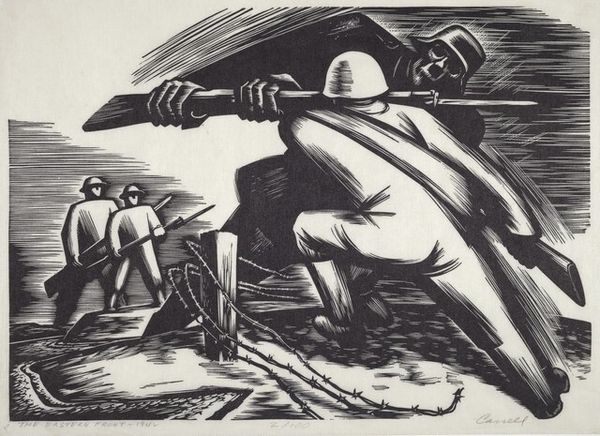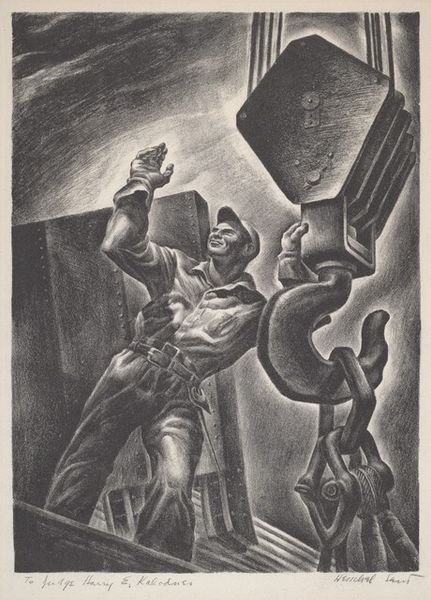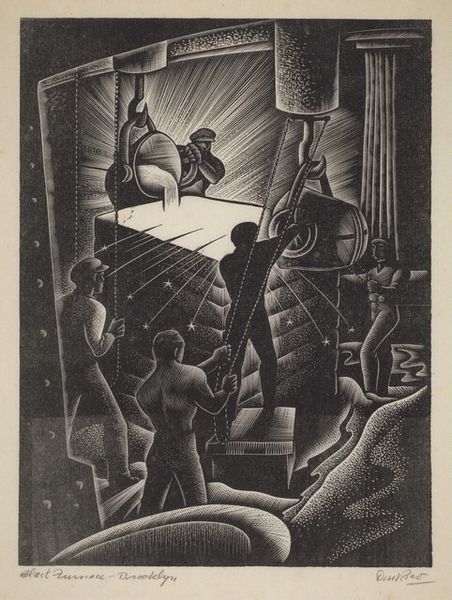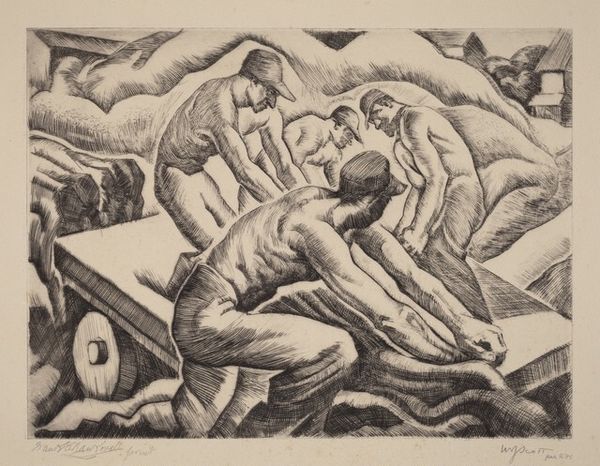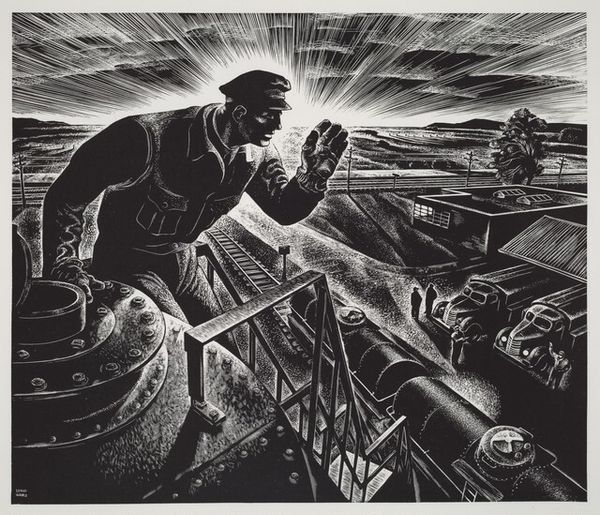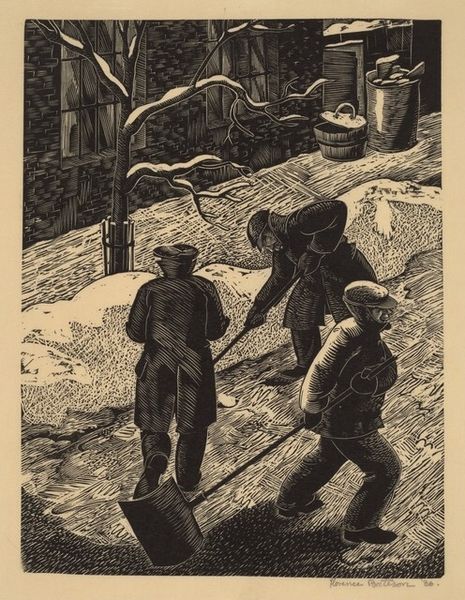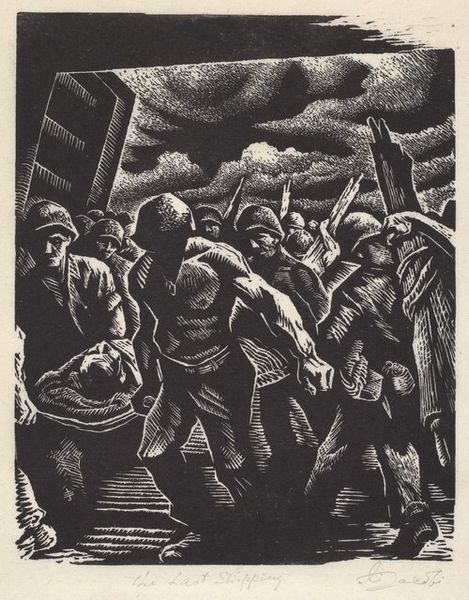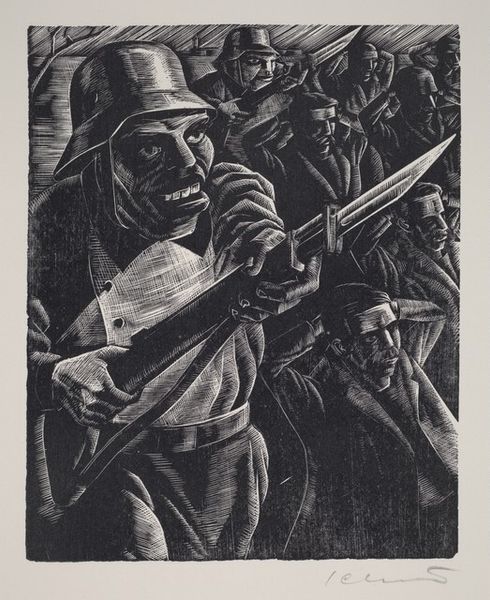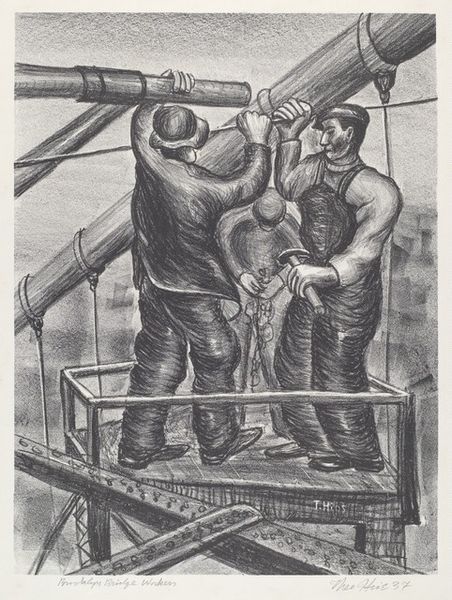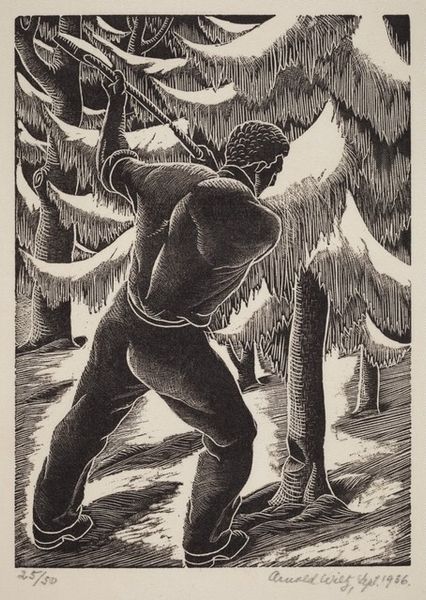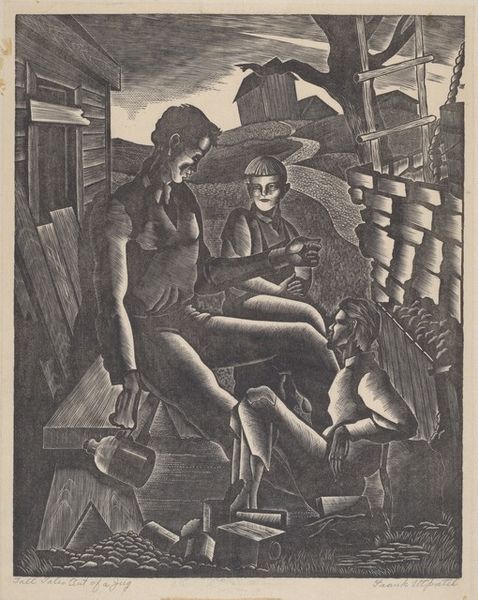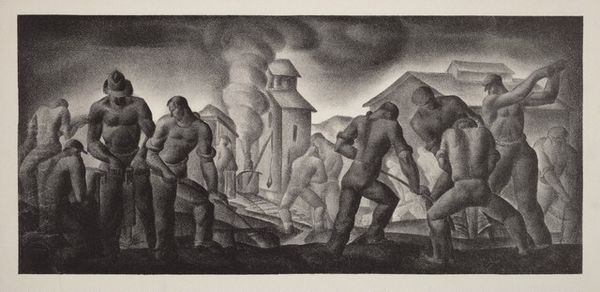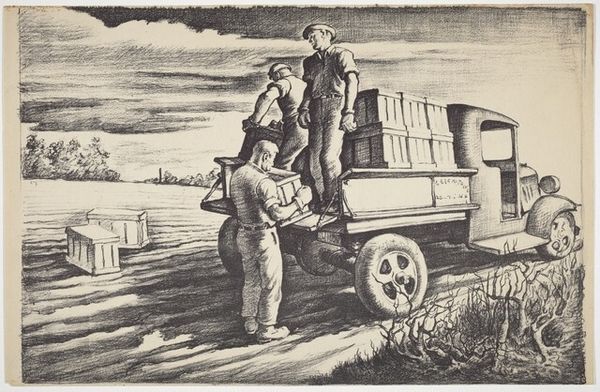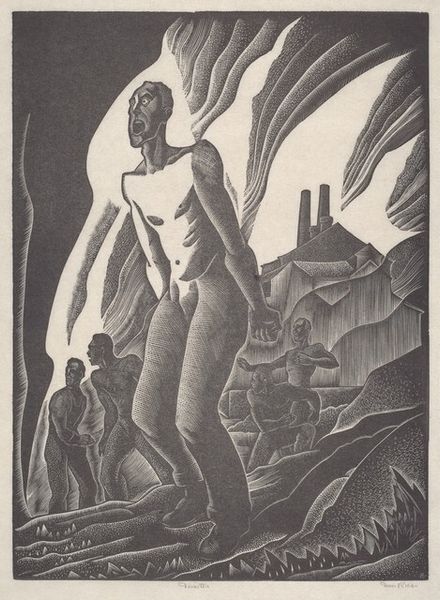
print, woodcut
# print
#
social-realism
#
pencil drawing
#
woodcut
#
genre-painting
#
realism
Dimensions: Image: 255 x 205 mm Sheet: 385 x 313 mm
Copyright: National Gallery of Art: CC0 1.0
Curator: Let's discuss this print, Cement Finishers, created by Leon Gilmour in 1939. It's a striking woodcut, typical of the Social Realist style popular during the period. Editor: It certainly hits you with its bold contrasts! The high-contrast lighting and stark lines really bring out the laborers’ figures and emphasize their physicality. It almost feels sculptural. Curator: Absolutely. Woodcut as a medium lends itself to this dramatic effect. It was a relatively accessible technique, aligned with the democratizing impulses behind Social Realism and projects sponsored by the WPA, seeking to depict the common person and daily life. Editor: The print really celebrates labor, doesn't it? Look at the texture of the wood grain, echoing the rough materials these workers handle. The pipes, the suggestion of sand...it grounds the image in a very tactile reality. Curator: And it reflects the economic realities of the late 1930s in the United States. Artists frequently turned to depicting industry and construction as symbols of recovery and resilience after the Great Depression. The composition directs our gaze upwards towards the scaffolding; it’s subtly heroic. Editor: It also raises some questions for me. While the figures are rendered powerfully, there’s also a lack of detail, especially in their faces. It almost seems like the process of cementing and manual labour subsumes their individual identity. Does this highlight class exploitation, or simply represent their profession? Curator: I think it treads a line between those ideas. Gilmour's work definitely reflects the broader concerns about labor conditions during that time, but he’s also careful to portray these workers with dignity. The monumental scale within the print contributes to that, elevating their status despite their somewhat anonymized appearance. Editor: I am struck by how immediate it feels. The choice of black and white adds urgency and directness; like the contrast creates a sense of stark social reality in a single glance. The technique allows Gilmour to make commentary on work and societal views on these labourers, it feels impactful. Curator: In short, this is a remarkable print for considering American values placed on labor and industry in times of strife and rebuilding. The New Deal era shaped our nation's physical landscape, thanks to their work, and this artist offers a moving, engaging glimpse into that. Editor: It certainly demonstrates how a humble medium like a woodcut can resonate with profound social implications, particularly focusing on the role of labor within our cultural heritage. It serves as a striking document to those material processes that influence the historical context.
Comments
No comments
Be the first to comment and join the conversation on the ultimate creative platform.
